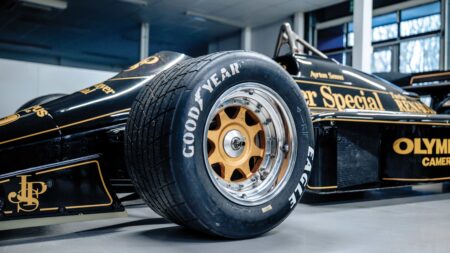
Why Kimi Antonelli was the silver lining in Mercedes' 'worst' F1 race of 2025
As Mercedes dropped down the F1 order in Saudi Arabia, team boss Toto Wolff found a hope in Kimi Antonelli's performance for the team
Working at Motor Sport certainly has its perks.
In April I visited a BMW Classic workshop near Munich to see the unveiling of the restored Brabham BT52 that Nelson Piquet would eventually drive up the hill at Goodwood. It was a fascinating day, hearing Gordon Murray, Paul Rosche and members of BMW’s engine department talk about the development of the project which culminated in the 1983 World Drivers’ Championship for Piquet. The Brazilian’s pranks, boxes of mangled pistons and building-length telemetry readouts make for a good story – that and hearing the thing started up indoors…
As entertaining as the main attraction was, my highlight came after most people had gone home. As our flight wasn’t for another few hours I was sat with the rest of the British contingent, waiting for our transport to the airport. A head appeared around the door: “Paul and Gordon are going to look at some cars. Would you like to come?” Well, yes, of course we would.
We were led into the depths of the building and it soon became apparent how important this facility is for BMW. Aside from the many classic road cars that pass through the workshop a good chunk of the company’s racing history is maintained there. To see those incredible cars close up was a treat in itself, but Murray and Rosche were drawn to one in particular.
The McLaren F1 was the last project the two friends worked on together in the mid-’90s and, presented with one to poke around, they took the chance. As a journalist your first thought is to jump in and ask questions but in this instance it didn’t seem like the thing to do. We just stood back and listened as two of racing’s greatest technical minds reminisced about shared achievements.
The Le Mans win in 1995 – courtesy of Yannick Dalmas, JJ Lehto and Masanori Sekiya – is still a point of great pride. “We beat the prototypes with a GT car,” said Murray. “It’s easy to forget that the car that won was basically the same as the road-going version.”
Seeing as we were intruding on what was essentially a private conversation it doesn’t seem right to give away much more of what was said – although Murray’s story about removing the silencers from his F1 because there was a tunnel near his house deserves a mention. We were left with the impression that all the sleepness nights and stretched budgets were worth it for the feeling they still get today.
Murray and I shared a car back to the airport afterwards and had a long chat about what lay ahead for his iStream concept – all off-the-record at the time but since announced. The design philosophy, which features a separate chassis and body, is gaining weight in the industry and it was a real pleasure to hear it straight from the horse’s mouth.
Motor sport journalists are a privileged bunch and over the course of 2013 I’ve had a few moments that could have been my highlight, including crossing ‘interview Stirling Moss‘ off the bucket list. But this moment was special because it’s not even the sort of thing journalists get to see very often: a truly intimate moment that you feel lucky to witness.
More highlights of the year
Ed Foster
Gordon Kirby
Andrew Frankel
Mat Oxley
Paul Fearnley
Rob Widdows
Damien Smith
Gordon Cruickshank
Simon Arron
Damon Cogman

As Mercedes dropped down the F1 order in Saudi Arabia, team boss Toto Wolff found a hope in Kimi Antonelli's performance for the team

Zak Brown is still adamant on his approach that Lando Norris and Oscar Piastri are ‘number ones’ at McLaren. But how long will it be before history repeats itself and takes a sour turn?

It's 40 years since Ayrton Senna's incredible first F1 win at Estoril – we captured the brilliant grand prix car he did it in for this month's magazine

Twenty-five years ago, the British GP was the subject of a 'prank' by the powers that be as Bernie Ecclestone and Max Mosley made the BRDC hold the race on Easter Sunday. But the chaos that ensued didn't have the desired effect, as Matt Bishop recalls